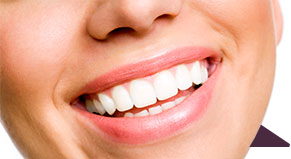 Teeth are an important part of the human body. We need them to chew our food, which enables us to survive, and if we take care of them, they can also give us a beautiful smile. But did you know that our teeth also affect how we talk? And if we don’t take care of them our overall health suffers? Teeth play a major role in our lives outside of just eating, which is why it is important that we take care of them, and taking care of them starts with being educated on what makes up the teeth in our mouths.
Teeth are an important part of the human body. We need them to chew our food, which enables us to survive, and if we take care of them, they can also give us a beautiful smile. But did you know that our teeth also affect how we talk? And if we don’t take care of them our overall health suffers? Teeth play a major role in our lives outside of just eating, which is why it is important that we take care of them, and taking care of them starts with being educated on what makes up the teeth in our mouths.
Stages of Teeth
Natal Teeth
One in every 2000-3000 births, Natal teeth are present when the baby comes to term. The teeth, usually appearing in the lower gum, are also called fetal teeth. Natal teeth tend no roots, or weak roots, so they often fall out fairly quickly. Doctors usually remove them so that they do not interfere with natural nursing, or risk injuring the baby’s soft lips.
Baby Teeth
We, humans, have two sets of teeth during our lives. Our baby teeth — called our primary teeth — develop in infancy. Usually there are 20 of them, which are buried beneath our gums at birth. They should erupt entirely by our third birthday, and can begin to appear as early as when we are six months old. They start erupting in the front and center of the mouth first, on the top and the bottom. After that they spread out sideways, filling the mouth towards the back, with the molars coming in last.
An important function of baby teeth, outside of helping children to chew, is to prepare the jaw and the gums for the arrival of the permanent, adult, teeth. The baby teeth push the jaw and gums outward, making more space for the developing adult teeth to have room to erupt as the baby teeth fall out. This eruption begins to happen when the child is about six years old.
Adult Teeth
Permanent teeth — also called adult teeth — number 32 in most people, 16 on the top and 16 on the bottom. As we said, they begin coming in around six years of age, and it takes until about 12 years old until they fully erupt. Adult teeth are larger and stronger than baby teeth and are the last set of teeth humans will have, so it is very important to take care of them as you get older. Proper brushing, flossing, and regular dental check-ups can help ensure that your teeth remain healthy for the rest of your life.
Types of Teeth
There are four different types of teeth in humans: incisors, canines, premolars and molars. In each jawbone, there is a specific number of each type of tooth. In the front and center are four incisors, on each side of the incisors is one canine. Next to each canine are two premolars, and next to those are three molars. The two back molars on each jaw, also known as the wisdom teeth, may not erupt. They are often impacted — sometimes sideways — into the jaw which often requires surgery to remove.
Incisors
The incisors support the lips and help you articulate the words you speak. They are thin and sharp and cut the food you eat into smaller pieces so it can be chewed by the larger, flatter molars. We have four incisors.
Canines
Canines help guide the teeth so that they slide neatly together. They also pierce and cut the food for easier chewing. Dentists call the pointy canines the cuspids. We have four canines.
Premolars
Also called bicuspids, they, along with the molars, are flat on the top and are used for chewing. We have eight premolars.
Molars
The molars are the largest, flattest teeth we’ve got, and do the bulk of the masticating, or chewing. The upper molars have three roots, the lower molars have two. The molars also help to support the height of the face. We have 12 molars.
Supernumerary Teeth
In some cases a person may develop more than 32 teeth, these are known as supernumerary teeth. Most often this is an extra incisor, in between two other incisors. This incisor is known as a mesioden. Another common supernumerary tooth is the paramolar, an additional molar. Extra canine teeth have also been known to occur. These extra teeth can cause issues with spacing within the mouth and are often removed by your dentist.
Anatomy of a Tooth - What Makes up Your Teeth
The Crown and the Root
A tooth is comprised of two major parts: the crown and the root. The crown of a tooth is the white part that you can see, the part that is above the gum line. It is only about 1/3 of the whole tooth. The root is embedded in the gums and the jawbone. It is about 2/3 of the tooth and surrounds the nerve endings, or pulp, of the tooth.
Enamel
The enamel is the shiny white coating on the outside of the tooth. It is also the part that becomes dull and yellow if you don’t brush properly, or eat, drink or smoke things that can stain the enamel. The enamel protects the tooth from wear. Tooth enamel is the hardest substance in the body.
Dentin
Dentin is a yellow, bony material that supports the tooth’s enamel. It also carries some of the nerve fibers that ache when something is wrong with your tooth. Dentin is stronger than bone, but softer than enamel.
Cementum
Cementum is the tooth root’s surface layer. It is a dynamic periodontium entity, meaning that it is not a passive chemical like enamel. It attaches to the bone and the gingiva. Gingivitis can inflame it. Cementum helps repair and regenerate the teeth.
Dental Pulp
In the tooth's center is the pulp, which contains blood, nerves and lymph vessels. The nerves and lymphatic vessels send electrochemical signals to the nervous system and the brain. The blood feeds the tooth, keeping it alive.
Keep Your Teeth Healthy
Once our adult teeth grow in that's it, there's no going back. If your adult teeth fall out or become diseased, you will have to resort to dental implants or dentures for the rest of your life. Regular brushing, flossing, and check-ups by your dentist are great ways to help prevent tooth decay and other oral health issues. Cutting down on sugary drinks and smoking can also help the longevity of your teeth.
If you're in the Chicagoland area and looking for more information regarding the health of your teeth, or you wish to setup an appointment to see one of our incredible Dentists, contact us today!






 Website Powered by Sesame 24-7™
Website Powered by Sesame 24-7™